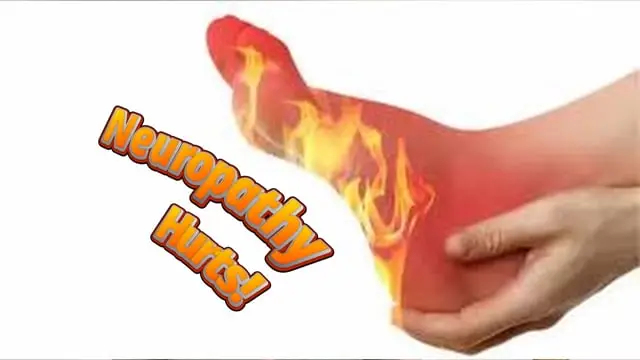7 Surprising Ways Adipose Stem Cells Relieve Neuropathy Pain
Neuropathy pain relief is something millions of people desperately seek. Peripheral neuropathy can cause burning, tingling, and stabbing pain that makes everyday life miserable. Unfortunately, conventional treatments like painkillers, anticonvulsants, or antidepressants often provide only partial relief and come with side effects. If you’ve been searching for a better solution, you’ll be excited to learn about a cutting-edge option: autologous adipose-derived stem cell therapy. This treatment uses your own fat tissue’s stem cells to promote healing and reduce nerve pain. At Innovations Stem Cell Center, Dr. Bill Johnson, as seen on Good Morning Texas, has been using adipose stem cells for over 12 years to treat patients who had lost hope. Approximately two-thirds of neuropathy patients respond to this therapy – often those for whom nothing else worked. Below, we’ll explore seven surprising ways this therapy can provide neuropathy pain relief and improve your quality of life.
1. Targeted Neuropathy Pain Relief by Reducing Nerve Inflammation and Pain
Chronic neuropathy pain is often driven by inflammation in damaged nerves. Stem cell therapy harnesses cells from your own fat to fight that inflammation at the source. Mesenchymal stem cells (MSCs) from adipose tissue release anti-inflammatory factors that calm overactive immune responses in your nerves: pmc.ncbi.nlm.nih.gov
By reducing inflammatory chemicals, stem cells help soothe the burning and tingling pain of neuropathy. In fact, research has found that traditional pain medications have limited effect on neuropathic pain because the mechanisms are so complex
This multi-targeted approach means adipose stem cell therapy can provide more effective neuropathy pain relief than one-dimensional drugs
Patients often report neuropathy pain relief or hand tingling diminishes as inflammation subsides.

2. Repairing Damaged Nerves to Address the Root Cause
Whereas most neuropathy treatments only mask symptoms, adipose stem cell therapy aims to heal the underlying nerve damage, helping deliver neuropathy pain relief. Stem cells have a remarkable ability to stimulate regeneration. When injected, they migrate to injured nerves and release growth factors that encourage nerve repair and regrowth. Multiple studies indicate that adipose-derived stem cells are effective at regenerating peripheral nerves resulting in neuropathy pain relief
By differentiating into Schwann cell-like cells (the support cells of nerves) and secreting nerve growth factors, these cells help rebuild the protective coatings and connections of injured nerves. Over time, this can lead to improved nerve function – meaning neuropathy pain relief and less numbness. In essence, the treatment doesn’t just dull the pain; it helps your nerves heal themselves, tackling neuropathy at its source. Many patients see long-term improvement because their nerves are healthier after treatment, not just temporarily numbed.
3. Drug-Free, Natural Therapy with Minimal Side Effects
Adipose stem cell therapy is a natural, holistic approach, using healing cells drawn from your own body. A small amount of fat is gently taken (often from your belly or thigh), and the stem cells within that fat are concentrated and reintroduced into your body. Because the cells are autologous (from you), there’s no risk of rejection or allergic reaction – unlike some medications that might not agree with you. This therapy can reduce or eliminate the need for strong pain drugs like gabapentin or opioids, which often cause drowsiness, dizziness, or other side effects. Patients love that stem cell treatment is essentially an “organic” solution: giving neuropathy pain relief. It utilizes the regenerative power of their own fat tissue. Aside from mild soreness at the liposuction site or injection site, there are very few side effects. In a 2024 review of stem cell therapy for neuropathy, the only noted complications were minor injection site pain or swelling that resolved in days
4. Long-Lasting Relief by Addressing Symptoms and Their Cause
One of the most promising aspects of stem cell therapy for neuropathy is the potential for long-lasting neuropathy pain relief. Traditional treatments (like oral medications) stop working when you stop taking them – the pain often comes roaring back because the underlying nerve issues remain. Stem cells, on the other hand, work to change the condition of the nerves over time. By reducing inflammation and promoting nerve repair, they set the stage for sustained improvement. Many patients report gradual, continued relief in the months following stem cell injections as their nerves heal. Clinical observations suggest that improvements in pain and sensation can last a year or more in responders, possibly because the disease process has been altered rather than just temporarily suppressed. Every patient is different, of course, but the goal of adipose stem cell therapy is to provide more than a band-aid. It aims for durable relief that improves daily function. Imagine months of reduced neuropathy pain and improved mobility – instead of watching the clock for your next pill. That long-term benefit is a key reason patients are excited about this treatment.
5. Hope for Difficult Cases: Succeeds When Other Treatments Fail
Perhaps the most encouraging aspect of adipose stem cell therapy is its track record in tough neuropathy cases. By the time patients come to a stem cell clinic, they’ve often tried everything – prescriptions, creams, physical therapy, even other procedures – with little success. Stem cell therapy can offer hope where other approaches have failed. Data from the Cell Surgical Network (a group tracking stem cell outcomes) showed that two thirds of neuropathy patients responded to fat-derived stem cell treatments, and most of those patients had exhausted standard therapies
. In our own experience at Innovations, roughly 65% (about two-thirds) of patients see meaningful neuropathy pain relief after adipose stem cell therapy. It’s often the patients with the most stubborn, treatment-resistant neuropathy who respond the best, perhaps because stem cells provide a totally new mechanism of action. Imagine finally feeling improvement after years of suffering. One reason could be that stem cells address neuropathy’s root causes (nerve degeneration and inflammation) rather than just numbing the nerves. For those living with relentless nerve pain and numbness, this therapy can be a game-changer. It’s important to have realistic expectations – not everyone responds – but knowing that the odds are in your favor (~65% respond) is a reassuring statistic for patients who felt out of options.
6. Backed by Research and Real Patient Success Stories
Stem cell therapy for neuropathy isn’t just anecdotal – it’s supported by a growing body of scientific research. Numerous animal studies have demonstrated neuropathic pain relief behaviors after stem cell injections, and early human trials are showing improved nerve function. For example, a recent meta-analysis of human studies in diabetic neuropathy found significant improvements in nerve conduction (how fast nerves send signals) and sensory scores in patients treated with stem cells
In plain language, patients’ nerves started working better and they felt more sensation – correlating with pain reduction. These findings give credibility to what patients are reporting in real life. And what are patients saying? Here at Innovations Stem Cell Center, we’ve witnessed some remarkable turnarounds. One patient, Aquila, shared her experience: “This has been my best medicine… You took something that was already a part of my body and put it somewhere else and just like that – wow. I’m happy.”
Aquila had been on numerous medications with no relief until stem cell therapy, which she describes as “self-healing.” Such testimonials echo a common theme: people regaining their lives after stem cells eased their pain. While individual results vary, hearing these success stories and seeing positive clinical studies
gives patients confidence that they’re choosing a therapy with real, tangible benefits.
7. Trusted Expertise with 12+ Years of Experience in Stem Cell Care
When considering an advanced treatment like stem cell therapy, you want to be in experienced hands. Dr. Bill Johnson, founder of Innovations Stem Cell Center, has over 12 years of experience using adipose-derived stem cells to treat patients
He was one of the early pioneers in this field in the United States and has performed thousands of stem cell procedures. This depth of experience means that the procedure is done safely and effectively, following best practices developed over more than a decade. Our clinic is extremely familiar with peripheral neuropathy cases – we understand the challenges you’ve been through and how to tailor stem cell treatment to maximize your results. Dr. Johnson stays up-to-date on the latest research and refinements in technique, so you receive state-of-the-art care. We also adhere to all FDA guidelines and Cell Surgical Network protocols to ensure safety and ethical use of your cells. In summary, you’re not just getting a promising treatment – you’re getting it from a team that’s truly expert in regenerative medicine. That should give you peace of mind as you take this step toward relief.

In Conclusion:
Peripheral neuropathy pain can leave people feeling hopeless, but adipose stem cell therapy is offering a new path forward. By using your body’s own healing cells, we can alleviate pain, repair nerves, and improve function in ways that standard treatments simply can’t. The fact that about two-thirds of patients experience relief (especially those who had tried everything else) means this therapy is absolutely worth considering if neuropathy pain is limiting your life. Always consult with a qualified physician like Dr. Johnson to see if you’re a good candidate. For many patients, stem cell treatment has meant the difference between constant misery and comfortable living. If nothing has worked for your neuropathy pain, autologous stem cells from your own fat might just be the breakthrough you need for neuropathy pain relief and get back to the activities you love. Don’t give up hope – real relief may be possible with this innovative, safe treatment.
Schedule Your Neuropathy Consultation
Ready to get control over your neuropathy pain? We offer in person and virtual stem cell treatment consultation in our Dallas location. Find a time that works for you and get neuropathy pain relief. Schedule your consultation here.





